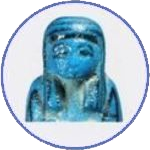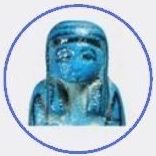
Introduction
Wonderful things...
The collecting of antiquities and early art must be among the oldest of human hobbies and eccentricities. Whether one acquires items for study, cultural preservation, aesthetic pleasure or a combination of many other factors, it's hard not to be fascinated by an object which seems to speak out from the distant past.
Much media attention is devoted to exquisite works of art such as Tutankhamun's grave goods or the Parthenon Marbles but hidden within most museums are countless smaller objects, the items from the every-day lives of ordinary people, and these are the objects in which we specialise.
Most of the antiquities which survive today were not intended by their makers to be anything more than utilitarian or sometimes ritual objects, their survival has mostly been down to chance rather than intention. These antiquities may be venerated as art, fashion statements or just curiosities today. But foremost they are, and always will be, the remnants of our shared cultural heritage, often pre-dating modern religions, nations and other devisive boundaries of self-identification.
Although an object may provide useful artistic or historical information, much academic research relies on context: the location and conditions of excavation. Until the advent of modern archaeological methods in the 20th Century, few antiquarians or museums paid much attention to the excavation context of their acquisitions.
For this reason, vast quantities of antiquities passed ito commercial markets and private possession during the 18th, 19th and much of the 20th Centuries. These are the items in which we trade, and they are generally known as provenanced antiquities to distinguish them from the illicit trade involving modern-day looting of archaeological or cultural sites. Responsible dealers, collectors, and museums have learned the importance to study collection and excavation history in order to retain data for future generations and also as a tool to avoid illicit objects.
We go to great lengths to research provenance history and often consult with curators, academics and experts prior to purchasing a collection.
Every object we sell is issued with paperwork detailing not only the age, culture, and description of the item but also the collection information known to us at the time of sale. This is an evolving field but we always aim to be at the very forefront of the responsible as well as ethical antiquities trade.
We are proud to serve numerous museums and public collections, but it is of equal importance to us that anyone should be allowed to cherish and take part in the safeguarding of our shared cultural history. Our business is fundamentally based on a love of archaeology and we view our relationship with our clients as a mutual journey through this wonderful subject.


